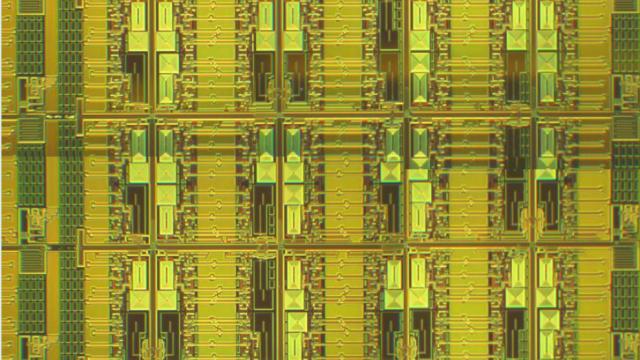Quantum computing is being hailed as the future of data processing, with promises of performing calculations thousands of times faster than modern supercomputers while consuming magnitudes less electricity. And in the span of just two years the only commercially available quantum computer, the D-Wave One, has already doubled its computational power. Kiss your law goodbye, Mr Moore.
Quantum computing differs from classical computing at its most fundamental level. While traditional computers rely on the alternate bit states of 1 and 0 to store data, quantum computers exploit the fuzzy effects of quantum mechanics, allowing its “qubits” to exist as a 1, 0 or both simultaneously, a.k.a “superposition”. So while a traditional computer will sequentially explore the potential solutions to a mathematical optimisation problem, the quantum system looks at every potential solution simultaneously, known as quantum annealing, and returns answers — not just the single “best” but nearly 10,000 close alternatives as well — in roughly a second. What’s more, unlike traditional computers which rely on logic gates to manipulate bits, the D-Wave system uses an adiabatic, which reads out the ground state of its qubits to find a solution.

The 128-qubit array of the DW1
When the original D-Wave One (DW1) debuted in May, 2011, it utilised a 128 qubit chip-set, magnitudes faster than existing supercomputer technology, and was immediately purchased by research labs and defence contractors such as Lockheed, which installed one at USC in LA. However the recently released D-Wave Two (DW2), blows its predecessor out of the water using a massive 512 qubit array.

Each qubit is a small, superconducting processor that exploits quantum mechanical effects. These effects are magnified the more qubits that are connected to one another. Were every one of the 509 functional qubits in the D-Wave Two hooked up to one another, the system would wield processing powers 100 orders of magnitude more powerful its predecessor. However, since each DW2 qubit only communicates directly seven other qubits in tightly packed blocks or nodes — these nodes are then connected to other 8-qubit nodes in the lattice — the DW2 is only about 300,000 times more powerful than the D-Wave One. So, you know, just a modest spec bump.
Heck, even when the DW2 is only using 439 qubits, as it did when D-Wave Systems consultant, Catherine McGeoch, tested it against state of the art workstations running top of the line CPLEX optimisation algorithms, the DW2 produced results 3600 times faster — providing 100 solutions in a half second. The workstations required a half hour to produce the same.
But in order to take full advantage quantum effects, the DW2 requires very specific, extreme conditions. For one, it operates at 0.02 Kelvin — 150 times colder than the depths of interstellar space and just two degrees above absolute zero — in a vacuum 10 billion times lower than standard atmospheric pressure and experiences 50,000 times less magnetic interference thanks to its heavy shielding. Surprisingly, achieving these temperatures consumes just 15.5kW and takes up just 10sqm of floor space, compared to the thousands of kilowatts and warehouses of space that traditional supercomputers require.

A qubit – Ndickson at en.wikipedia
Google, NASA and the Universities Space Research Association all kicked in on a DW2 in May of last year — D-Wave Systems won’t quote prices though the BBC estimates its cost at about $US15 million — for machine learning research (which would help explain why Google’s been snapping up every AI designer and robotics company it could get its hands on over the last six months). Quantum computing still has a way to go before it’s reliable, but between recent breakthroughs and kickass hardware, it shouldn’t be long before it’s ready to catapult us into the future. [Wiki 1, 2 – Extremetech – BBC – D-Wave Systems – Nature]
